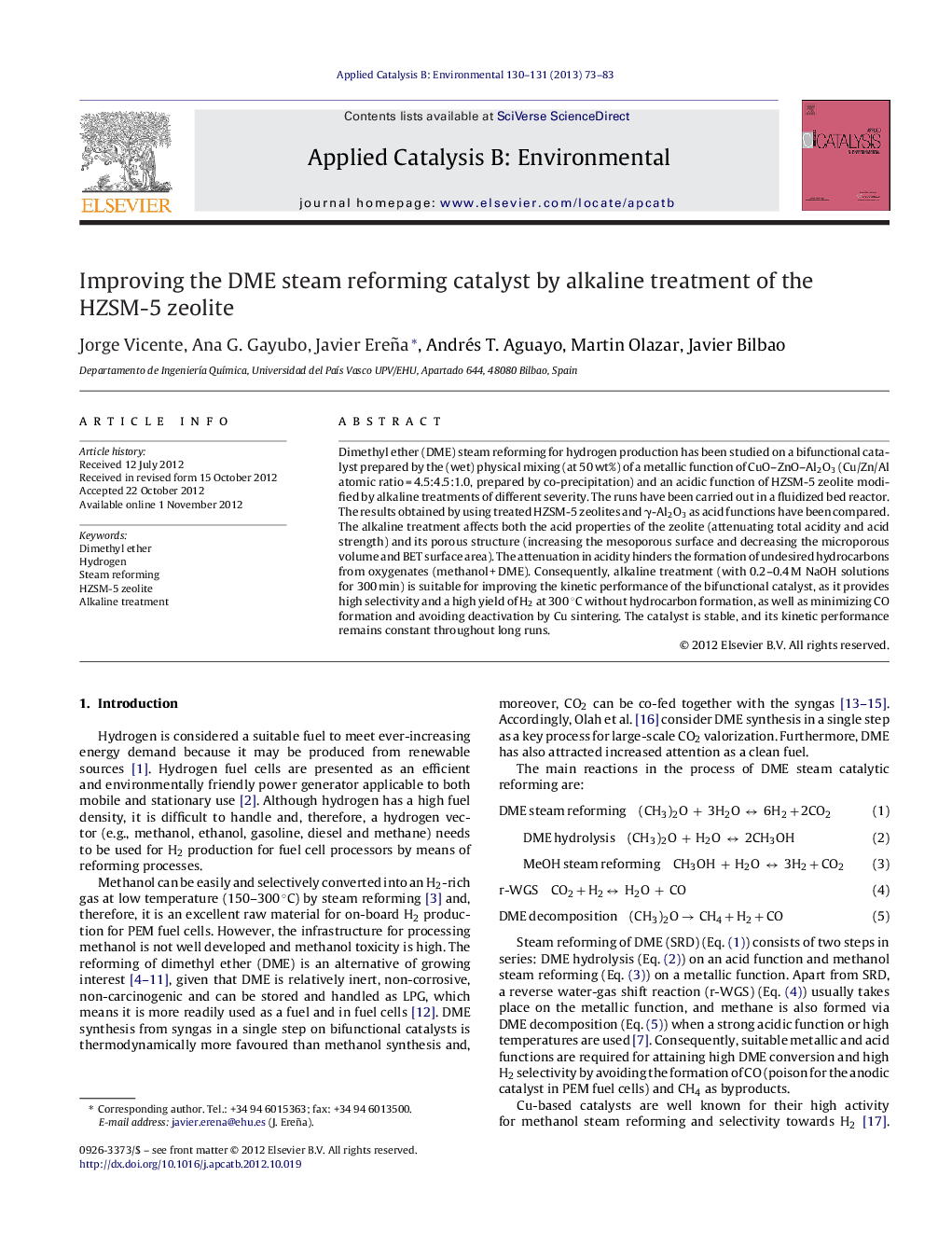| Article ID | Journal | Published Year | Pages | File Type |
|---|---|---|---|---|
| 45817 | Applied Catalysis B: Environmental | 2013 | 11 Pages |
Dimethyl ether (DME) steam reforming for hydrogen production has been studied on a bifunctional catalyst prepared by the (wet) physical mixing (at 50 wt%) of a metallic function of CuO–ZnO–Al2O3 (Cu/Zn/Al atomic ratio = 4.5:4.5:1.0, prepared by co-precipitation) and an acidic function of HZSM-5 zeolite modified by alkaline treatments of different severity. The runs have been carried out in a fluidized bed reactor. The results obtained by using treated HZSM-5 zeolites and γ-Al2O3 as acid functions have been compared. The alkaline treatment affects both the acid properties of the zeolite (attenuating total acidity and acid strength) and its porous structure (increasing the mesoporous surface and decreasing the microporous volume and BET surface area). The attenuation in acidity hinders the formation of undesired hydrocarbons from oxygenates (methanol + DME). Consequently, alkaline treatment (with 0.2–0.4 M NaOH solutions for 300 min) is suitable for improving the kinetic performance of the bifunctional catalyst, as it provides high selectivity and a high yield of H2 at 300 °C without hydrocarbon formation, as well as minimizing CO formation and avoiding deactivation by Cu sintering. The catalyst is stable, and its kinetic performance remains constant throughout long runs.
Graphical abstractFigure optionsDownload full-size imageDownload as PowerPoint slideHighlights► HZSM-5 zeolite modified by alkaline treatment is used as acid function for the catalyst in the DME steam reforming. ► The treatment of the zeolite with NaOH enables to obtain high yields of H2. ► The attenuation in acidity lowers the formation of undesired hydrocarbons and CO. ► The catalyst is stable and its kinetic behaviour remains constant with time on stream.
